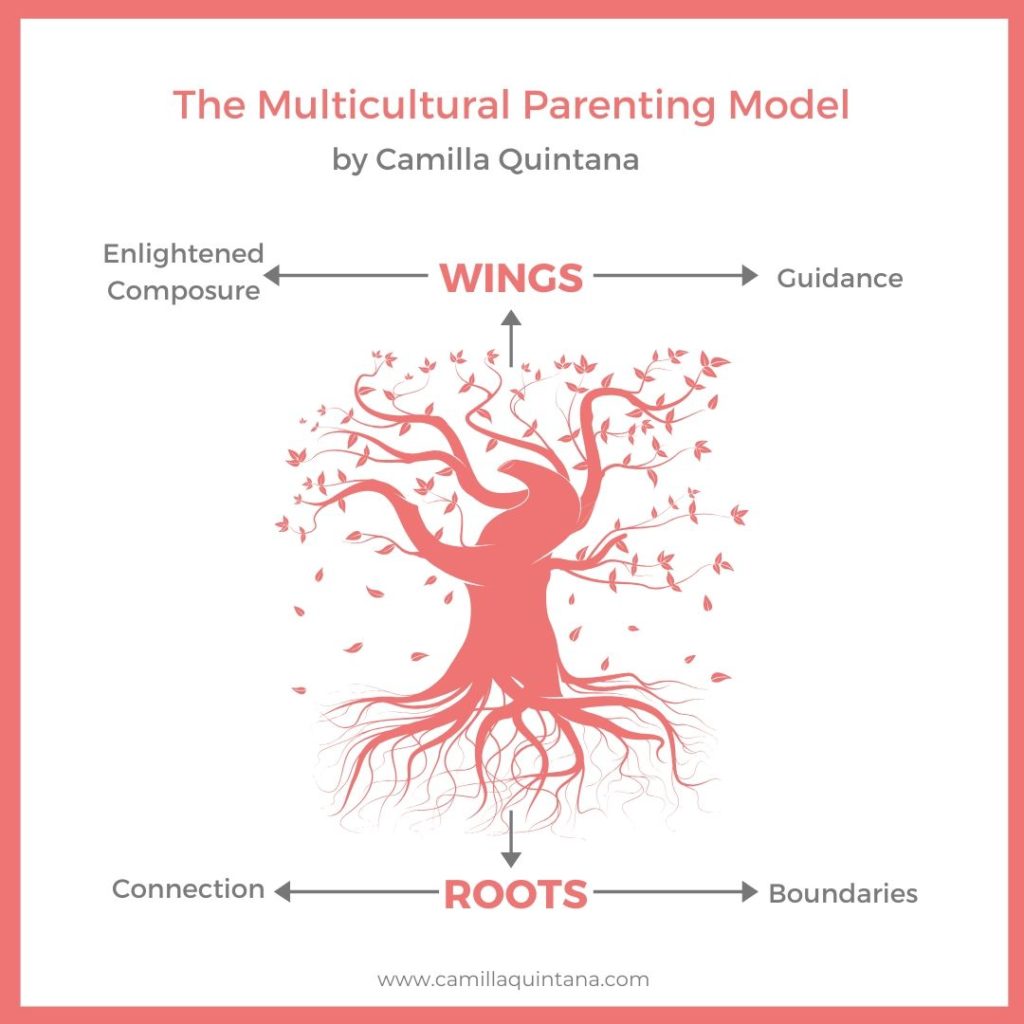
The Multicultural Parenting Model
Parenting always brings up so many questions and when it comes to multicultural children or third culture kids that grow up with different cultural influences, it can be even harder to determine what’s best for them in a particular situation and how you should react to certain things.
So I’ve been working on a Framework that I baptized “The Multicultural Parenting Model” that you can apply to any kind of situation with your child, that will serve and guide you and give you a greater confidence in your parenting decisions and challenges.
First of all I want to say that each child has a truly unique spirit and so do we all, so if you’ve been looking for a kind of manual on how to raise your children, I’m afraid there is none. (But if you find one, please send it to me! ;-))
I think it’s really up to us to figure out what’s best one situation at a time, taking into consideration:
- the unique spirit of our child – who might be more or less sensitive, more or less active, more or less provocative…
- your own personality, values and beliefs
- the importance and severity of the situation at hand
So while I can’t give you specific answers to your individual parenting concerns, I’ve designed a framework that I’ve been testing and loving, and I’m sure that no matter what’s going on you can apply it.
Multicultural Children need Roots and Wings
I’ve often said the phrase that multicultural children needed a good balance between strong roots and wings to be able to fly. But what does that mean exactly?
Well, let me show you:

Each situation with your children will call for you to choose between those two elements: ROOTS or WINGS. And for each element you have two choices, one is a more proactive, strong approach, while the other is a softer and steadier one.
When you choose ROOTS you can go two ways:
- Connection which is soft; it’s about increasing closeness, heartfelt understanding and trust. It’s about loving and nurturing your child.
- Boundaries which is firm and active. This is where you might say “no”, or “only this but not that”. Or where you intervene.
And when it comes to WINGS you can choose between
- Enlightened Composure. Enlightened because it really requires a lot of wisdom, maturity and consciousness. It’s about being able to pause. To step back. To listen but not interfere. It’s about accepting what is going on.
- Guidance: this again is the more proactive approach where you show and guide your child, where you teach them something they need to learn in order to then be able to do it by themselves, and to fly.
How to Apply The MPM

So let me give you an example: your child comes home from school and is bummed because someone made fun of his/her heritage (e.g. their accent, the way they look or dress etc)
Now ask yourself – and there is no right or wrong answer, this is up to you and your child, and the circumstances: what does my child need now? What should I give him / her:
Is it Roots? Do you want to ground their energy, pull them towards you? And if so, what should this look like?

Should it be through Connection? Then you might have a heartfelt conversation about this issue, giving your child comfort and the feeling that it belongs and is fully accepted in your family.
Or you might opt for Boundaries, where you might say that you’ll speak to the teacher, or you might tell your child that you don’t want them to do or say a particular thing in this particular situation.
Alternatively, you might determine that your child needs Wings, and is able to handle the situation more independently, to fly solo.

Here you might choose between Enlightened Composure, which is a wise and conscious ‘non-reaction’ to the situation or to a request your child has. You might just listening to him/her telling you the story. Repeating and clarifying some things, nodding along in understanding but not giving advice. Trusting that your child will be able to handle this situation by themselves and will grow from the experience.

Or else, you might sense that your child needs Wings but in form of Guidance, where you help them to come up with a plan, to develop a skill, to take them by the hand and show them a way but in order to then let them spread their wings and fly by themselves.
As I said, each situation will call for a different element but if you apply this framework you always know in which directions you can go.
Tapping into your inner wisdom
Think about a recent incident with your children. Maybe they wanted to dress in a way that you don’t approve of. Maybe they just got their heart broken. Maybe they’re throwing a tantrum. Maybe they’re opposing your upcoming move abroad. Maybe they don’t want to move back home. Maybe they don’t want to eat the food you’ve prepared for them.
Whatever it is, tap into your inner wisdom, reflect and take a moment to decide:
Does my child need Roots now, and if so, in the form of connection, nurturing and understanding or in the form of clear boundaries and rules?
Or should I give them Wings – by either being a kind of loving, trusting and well-wishing bystander or by taking their hand and guiding them towards the take-off point.
I really hope that my MULTICULTURAL PARENTING MODEL will serve you to make better decision, to learn how to tune into what your unique child needs in each unique situation and to tackle these situations with more confidence.
Please let me know your thoughts about this framework and try it out today – I’d love to hear how it’s working for you!
For more tips and guidance about parenting abroad / multicultural children, check out these episodes of The Empowered Expat Woman Podcast:
Episode 19: Raising Bilingual Expat Kids
Episode 23: Having a Baby Abroad
Episode 60: Self Care Hacks to Time Starved Expat Moms

